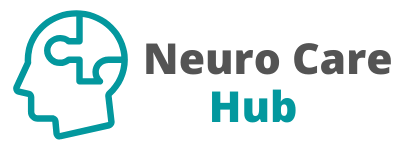Table of Contents
- Introduction
- 1. Next-Generation Sequencing
- 2. CRISPR Technology
- 3. Genome-Wide Association Studies (GWAS)
- 4. Biomarker Discovery
- 5. Genetic Counseling and Personalized Medicine
- Conclusion
- FAQs
Introduction
The field of neurology is experiencing a seismic shift, thanks to advancements in genetic research. With the ability to unravel the complexities of our DNA, healthcare professionals are now better equipped to diagnose neurological conditions more accurately and at earlier stages. In this article, we’ll explore the top five genetic innovations that are revolutionizing neurological diagnoses and how they are paving the way for a healthier future.
1. Next-Generation Sequencing
Next-Generation Sequencing (NGS) has emerged as a game-changing tool in the world of genetics. This technology allows for the rapid sequencing of entire genomes, enabling researchers and clinicians to identify genetic variations linked to neurological disorders.
Key Benefits of NGS:
- Speed and Efficiency: Traditional sequencing methods could take months; NGS can produce results in days.
- Comprehensive Data: NGS analyzes multiple genes simultaneously, providing a holistic view of a patient’s genetic makeup.
- Cost-Effectiveness: The price of sequencing has dropped dramatically, making it accessible for broader use in clinical settings.
Example: In diagnosing conditions like Alzheimer’s disease, NGS can identify specific genetic mutations that increase an individual’s risk, allowing for proactive management strategies.
Visual Element: NGS Workflow
| Step | Description |
|---|---|
| Sample Collection | Collect blood or saliva samples. |
| DNA Extraction | Isolate DNA from the sample. |
| Library Preparation | Prepare DNA for sequencing. |
| Sequencing | Sequence the DNA using NGS technology. |
| Data Analysis | Analyze genetic data for mutations. |
For more detailed information about NGS, visit Nature Reviews Genetics.
2. CRISPR Technology
CRISPR (Clustered Regularly Interspaced Short Palindromic Repeats) is a revolutionary genetic editing tool that allows scientists to modify DNA with precision. While often associated with gene therapy, its implications for diagnosis are equally significant.
How CRISPR is Changing Neurological Diagnoses:
- Targeted Gene Editing: CRISPR can be used to correct genetic mutations responsible for neurological diseases, offering the potential for not just diagnosis but also treatment.
- Development of Diagnostic Tools: Scientists are developing CRISPR-based tests that can detect genetic abnormalities linked to neurological disorders with high accuracy.
Example: Researchers are exploring CRISPR technology to develop quick tests for conditions like Huntington’s disease, which could lead to earlier interventions.
Visual Element: CRISPR Mechanism
| Process | Description |
|---|---|
| Targeting | Guide RNA binds to the specific DNA sequence. |
| Cutting | Cas9 protein cuts the DNA at the target site. |
| Editing | DNA repair mechanisms correct the mutation. |
Learn more about CRISPR from the Broad Institute.
3. Genome-Wide Association Studies (GWAS)
Genome-Wide Association Studies (GWAS) analyze genetic variants across populations to identify associations between specific genes and diseases. This approach is particularly valuable in understanding complex neurological disorders.
Advantages of GWAS:
- Identification of Risk Factors: GWAS can pinpoint genetic variants that increase susceptibility to conditions like Multiple Sclerosis and Parkinson’s disease.
- Large Sample Sizes: By studying diverse populations, GWAS can yield more accurate and generalizable results.
Example: A recent GWAS identified genetic markers that are significantly associated with the risk of developing Alzheimer’s disease, leading to better screening protocols.
Visual Element: GWAS Process
| Step | Description |
|---|---|
| Sample Collection | Gather DNA from a large group of individuals. |
| Genotyping | Analyze genetic variants across the genome. |
| Statistical Analysis | Compare genetic data between affected and unaffected individuals. |
For an in-depth understanding of GWAS, refer to Nature Genetics.
4. Biomarker Discovery
Biomarkers are measurable indicators of biological conditions, and in neurology, they can be pivotal for early diagnosis and treatment evaluation. Genetic biomarkers, in particular, are being extensively researched.
Importance of Genetic Biomarkers:
- Early Detection: Biomarkers can signal the onset of neurological diseases before symptoms appear, allowing for earlier intervention.
- Monitoring Disease Progression: Genetic biomarkers can help track how a disease is progressing and how well a treatment is working.
Example: The discovery of specific genetic markers for Alzheimer’s can help in the development of blood tests that diagnose the disease long before cognitive decline occurs.
Visual Element: Types of Biomarkers
| Type | Description |
|---|---|
| Diagnostic | Indicates the presence of a disease. |
| Prognostic | Predicts disease progression. |
| Predictive | Identifies likely response to treatment. |
For further reading on biomarkers, check out the National Institutes of Health.
5. Genetic Counseling and Personalized Medicine
As genetic testing becomes more prevalent in diagnosing neurological conditions, genetic counseling plays a crucial role in guiding patients through their options. This personalized approach can significantly improve patient outcomes.
Benefits of Genetic Counseling:
- Informed Decisions: Counselors provide insights into test results, helping patients understand their implications.
- Tailored Treatment Plans: With genetic information, healthcare providers can create personalized treatment strategies that cater to an individual’s unique genetic profile.
Example: Patients with a family history of neurological disorders may benefit from genetic counseling to assess their risk and discuss preventative measures.
Visual Element: Genetic Counseling Process
| Step | Description |
|---|---|
| Initial Consultation | Discuss family history and concerns. |
| Genetic Testing | Recommend and arrange appropriate tests. |
| Result Interpretation | Explain test results and implications. |
Explore more about genetic counseling at the American Society of Human Genetics.
Conclusion
The integration of genetic innovations into neurological diagnostics is not just a trend; it is a revolution that promises to enhance the accuracy and effectiveness of diagnoses. From Next-Generation Sequencing to personalized medicine, these advancements are paving the way for a future where neurological conditions can be detected earlier and treated more effectively. As research continues, we can expect even more breakthroughs that will transform patient care and improve lives.
FAQs
1. What is Next-Generation Sequencing?
Next-Generation Sequencing (NGS) is a method that allows for the rapid sequencing of entire genomes, providing comprehensive genetic information that can aid in diagnosing various conditions.
2. How does CRISPR work in genetic diagnosis?
CRISPR technology enables precise editing of DNA, which can help identify and correct genetic mutations associated with neurological diseases, thereby improving diagnostic accuracy.
3. What are biomarkers, and why are they important?
Biomarkers are measurable indicators of disease that can help in early diagnosis and monitoring of conditions. Genetic biomarkers, in particular, can reveal information about an individual’s risk for certain neurological disorders.
4. What role does genetic counseling play in neurological diagnoses?
Genetic counseling provides patients with valuable information about their genetic risks and the implications of test results, helping them make informed decisions about their health.
5. How can I learn more about genetic innovations in neurology?
You can explore more through reputable sources such as National Institutes of Health and Nature Reviews Genetics.
By understanding these groundbreaking genetic innovations, we can embrace a more proactive and informed approach to neurological health. For additional insights into the importance of neuro care and advancements in the field, consider visiting related articles like Top 5 Essential Insights on Neuro Care You Need to Know and Top 5 Essential Tools in Neuro Care You Should Know.



